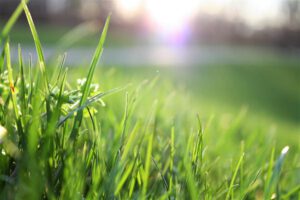A lush, vibrant lawn is not only a visual delight but also a testament to a well-cared-for property. Achieving that green paradise, however, often requires more than just regular mowing and watering. Lawn fertilizer, often referred to as the secret ingredient behind a stunning lawn, plays a pivotal role in nourishing your grass and enhancing its health and beauty. In this article, we will explore the transformative power of lawn fertilizer, how it works, and why it’s an essential component of lawn care.
The Role of Lawn Fertilizer
Lawn fertilizer is like a nutritional boost for your grass, providing essential nutrients that are necessary for growth and vitality. Here are the primary roles it plays in achieving a lush and green lawn:
- Promoting Healthy Growth: Fertilizer provides the essential nutrients, such as nitrogen, phosphorus, and potassium, that grass needs for growth, development, and overall health.
- Enhancing Color: Nitrogen in the fertilizer is responsible for the deep green color of your grass, enhancing its visual appeal.
- Strengthening Resistance: Fertilizer helps grass develop a robust root system, making it more resilient to stress, drought, and pests.
- Weed and Moss Control: Some specialized fertilizers contain ingredients that help prevent weed and moss growth, making it a useful tool for maintaining a weed-free lawn.
How Lawn Fertilizer Works
Lawn fertilizer typically contains a combination of essential nutrients, with the three primary ones being nitrogen (N), phosphorus (P), and potassium (K), often represented as N-P-K on fertilizer labels. Here’s how these nutrients work:
- Nitrogen (N): Nitrogen is the key nutrient responsible for promoting lush, green growth. It aids in the development of leaves and stems and enhances the color of your grass.
- Phosphorus (P): Phosphorus supports root development and helps your grass establish a strong, healthy root system.
- Potassium (K): Potassium is essential for overall grass health, helping it resist stress, disease, and harsh environmental conditions.
When and How to Apply Lawn Fertilizer
Applying lawn fertilizer at the right time and in the correct manner is crucial for optimal results. Here’s a basic guideline for when and how to apply:
- Spring: Early spring is an ideal time to apply a balanced fertilizer to help your grass recover from winter dormancy and stimulate new growth.
- Late Spring and Early Summer: Apply a high-nitrogen fertilizer to maintain that lush green color.
- Late Summer: Another round of fertilizer can help your lawn recover from the stress of summer heat.
- Fall: Apply a winterizing fertilizer to strengthen your grass for the upcoming cold season.
When applying lawn fertilizer, be sure to:
- Follow the manufacturer’s recommendations regarding application rates and timing.
- Use a broadcast spreader for even coverage.
- Water the lawn immediately after applying fertilizer to help it penetrate the soil.
Environmental Considerations
While lawn fertilizer can transform your grass, it’s essential to use it responsibly. Over-fertilization can lead to nutrient runoff, harming local waterways and ecosystems. Be sure to:
- Follow recommended application rates to prevent excess fertilizer use.
- Avoid fertilizing before heavy rain or during drought conditions when the fertilizer is more likely to runoff.
- Consider using slow-release fertilizers, which release nutrients gradually and reduce the risk of over-fertilization.
Conclusion
Lawn fertilizer is a powerful tool for achieving the green paradise you’ve always envisioned in your yard. By providing essential nutrients, enhancing color, promoting healthy growth, and strengthening resistance to stress and pests, it’s a vital component of lawn care. When used responsibly and in the right amounts, lawn fertilizer can turn your lawn into a lush and vibrant space that adds beauty and value to your property. So, embrace the power of lawn fertilizer, and watch your outdoor paradise come to life.
